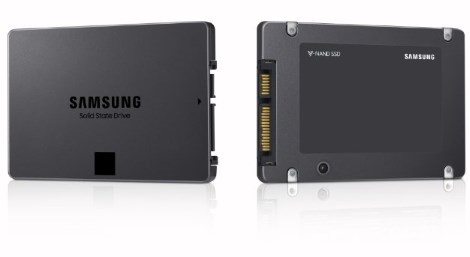Solid-state drives (SSDs) provide better performance than hard-disk drives (HDDs), but with several significant caveats, including one big one: For the last decade or so, one of the major problems with SSD technology has been affordability. 
That might change soon. This week, Samsung announced a 4-terabyte QLC-NAND solid-state drive aimed at consumers. While we don’t have pricing information yet, Samsung’s goal seems to be to reduce the cost of larger terabyte drives and make them an affordable choice for home computer users, particularly in the laptop market. By mass producing the new 4-terabyte drive, the company is sending a clear signal: SSD is the way of the future.
From a data recovery technician’s perspective, this is exciting, but problematic. To understand why, it’s helpful to understand a bit (pun intended) about how the new solid-state drives work.
Samsung’s QLC V-NAND Technology: Cheap, Fast, and Fragile
The new drives use a quad-level, 4-bit V-NAND technology, which Samsung refers to as QLC NAND.
The main advantage of QLC NAND is speed. By packing more capacity into its cells than other technologies like triple-level (TLC) NAND, QLC obtains blazing fast read/write speeds; the new drive will reportedly read at up to 540 MB/s and write at up to 520 MB/s.
But more density per cell comes at a cost. QLC storage can withstand fewer write cycles than other SSD technologies before become unreliable. This occurs because each erasure causes slight damage to the tunnelling oxide of the flash memory cells; over time, this results in errors as flash memory cells become unreadable.
To put that another way, QLC NAND has a shorter endurance than TLC NAND or other SSD technologies. On an extremely large drive, that might not be a big deal, provided that write cycles are relatively rare—but for heavy-write applications, QLC NAND has serious drawbacks.
What Does That Mean for Consumers?
For the average computer users, these concerns are minor, but notable. Samsung’s QLC solid-state drives will offer consumers a substantial upgrade over traditional hard drives in terms of speed, and when they’re affordable, they’ll likely become the obvious go-to choice for mobile computing. Flash technology is more resistant to physical shocks than hard drive technology, and the massive speed upgrade will allow for some pretty interesting applications; as Engadget noted, the new Samsung drives will be theoretically fast enough to capture and playback RAW 4K videos.
But consumers should understand that SSD technology still has significant drawbacks in terms of reliability. If you regularly back up your data—and, as we always note on this blog, check your backups—you can enjoy the coming QLC SSD revolution without major concerns.
If you don’t back up, recognize that SSD data recovery is currently much more difficult than hard drive data recovery. SSDs also have a ways to go before they’re a viable option for serious server applications in terms of affordability and reliability, and they’re not as dependable as hard drives when subjected to extensive read/write cycles.
We’re excited to get our hands on Samsung’s new solid-state drive technology to learn more. It’s okay to get excited—just realize that, in the world of storage, every new breakthrough comes with a few caveats.





